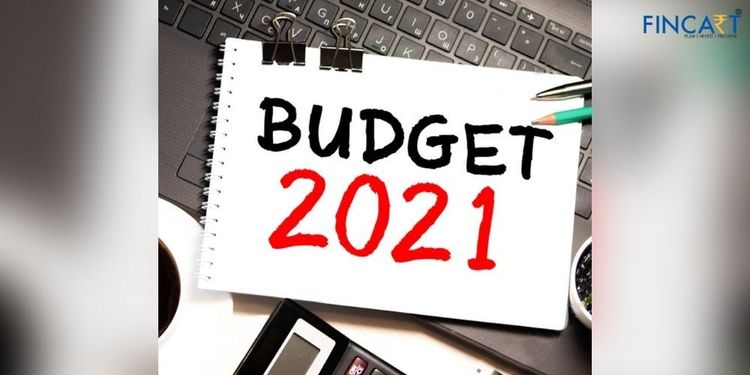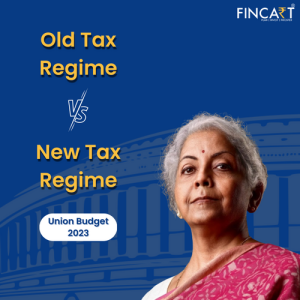Challenges of the Government
Pre-Covid: Demonetisation and implementation of GST did have some impact on the economy. The economy was struggling with poor growth even pre-Covid times. The private sector companies with excess capacities had limited head-room to increase private sector spend; the Government struggling managing Fiscal situation, lower tax collections had muted Government expenditures along with a weak consumption.
Covid Challenges: Increased social expenditures to ward of Covid pains; reduced tax collections because of lock-down.
The Government entered the Budget with the above challenges. Each one was eagerly waiting for Mrs. Santa (Finance Minister) for the Christmas presents (Annual Budget).
Markets hopes & fears:
Hopes – The Corporate sector wanting a growth-oriented budget, with increased Infrastructure spend, support for sectors under stress and boost to the manufacturing sectors. While the Individuals were hoping for increased 80C relief as the same was last revised in 2014, increase in the Standard Deduction limit or increase in the basic tax slabs rate.
Fear – The market was also fearful that there might be additional tax burden to fund the Covid impacted additional spend in the form of Long-Term Capital Gains or additional Covid cess, etc. Not increasing tax rates was good news.
What the Budget delivered:
This budget was all about priorities.
Choosing Growth over Fiscal Consolidation – A strong, positive growth-oriented budget with a focus on infrastructure spend. This was coupled with a relaxed attitude towards managing Fiscal deficit. The US Government in 2012-13 allowed the Fiscal Deficit to increase in order to fuel growth. The Indian Finance Minister did precisely the same thing by letting Fiscal Deficit slip to 6.8% for FY22 and tapering it gradually to 4.5% by 2026. There was an additional borrowing of 80,000 Crores in the current fiscal.
High Capital Expenditures – Increased the capital expenditures to INR 5.54 Lakh Crore from INR 4.4 Lakh Crore. Substantial allocation towards roads and infrastructure could revive the investment cycle.
Focus on efficiency via Asset Monetisation & Disinvestments – The disinvestment target of 1.75 Lakh Crore; privatise two public sector banks and one general insurance company; IPO of LIC; increased FDI limit in Insurance Companies from 49% to 74%; setting up of a new development finance institution to fund infrastructure projects and promoting competition in the power sector.
Boost to struggling Corporate Credit – Set up Asset Reconstruction Company Limited to buy stressed assets of banks and Asset Management Company Limited to buy investment grade bonds. The first will help bank’s lending ability while the latter will provide liquidity to the corporate credit market.
Direct Taxes – Government prioritises to support the Corporate sector over providing relief to Individuals. There were no changes in the overall income tax slabs rates. No ITR filing for 75 years & above; Interest amount of over & above Rs 2.5 Lacs on EPF to be taxable; The maturity proceeds of ULIP amounting to annual premium of above Rs 2.5 Lakh will no longer be tax-free, it will be taxed at 10% LTCG at par with Equity Mutual Fund. The Interest deduction of Rs 1.50 Lacs on home loan extended for 1 more year. Timeline for reopening tax returns reduced to 3 years; Tax Audit threshold increased to 10 Crores for companies with 95% Digital Transactions; Dividend Payment on REITs/ InvIT exempted from TDS. Faceless Assessment / Appeal and Income Tax Appellate Tribunal to be faceless.
Indirect Taxes – Custom duty raised on mobile components to 2.5%; solar inverters from 2.5% to 20%; cotton from nil to 10%; Introduce Agriculture Infrastructure and Development Cess (AIDC) to be introduced.
How does it all stack up?
Help boost growth – Government spending on capital expenditure to fuel growth, measures focussing on privatisation, measures to boost credit growth coupled with a low interest rate environment will aid private sector investment revival. This is positive for the Equity Market.
Higher Fiscal Deficit – The higher than the expected fiscal deficit is negative for the Debt markets and Bond Funds. One has to be cautious. Will have to watch how the ARC & AMC will help revive credit market, provide liquidity to evaluate investment in Credit Funds.
Cyclical and Value Sectors – The valuation of consumer staple stocks remains very high. The companies will continue to do well but the stock prices may perform relatively less when compared to the Cyclical or Value stocks. During 2004 – 2008 the cyclical sectors (Banks, Metals, Infrastructures) and Mid-Cap & Small-Cap did well. The high growth budget will fuel Cyclical & Value Sectors; Mid & Small Cap Stocks.
What should the Investors do?
It is a difficult time for Investors and Advisors. The equity is available at an elevated risk level. The Interest rate at an all-time low coupled with higher than the expected Fiscal Deficit is negative for the Bond market. Asset Allocation will be the holy grail that all investors must adhere to.
Re-visiting & re-allocating Portfolio:
Equity markets – The party in the Equity market may continue for some time given the fiscal support that the government has provided. The valuation levels are high, it is extremely difficult to time the entry & exit into the market, hence investors must invest with utmost caution. Investing via Systematic Investment Plans / Systematic transfer Plans is advisable. Must add up the cyclical sectors, value sectors, mid & small cap stocks.
Bonds – Higher Fiscal Deficit will drive bonds yields up. Goals that have shorter time horizon must be invested in low-risk funds; goals that are more than 3 years should only look at dynamic bond funds. Still sceptical about credit funds hence will wait & watch. Post budget the future spread has improved making Arbitrage Funds a good option for 3 months investments when compared to liquid funds.
For people with smaller amounts and do not know what to do they must simply invest in The Dynamic Asset Allocation Funds to manage the current investment environment.




